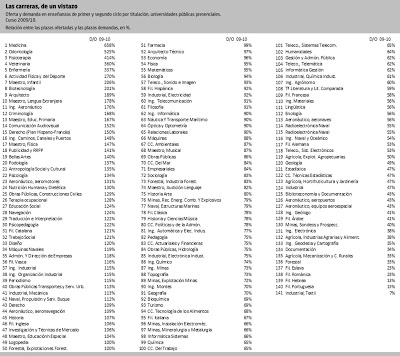Informe PISA
Cada tres años.
Programme for International Student Assessment (PISA) 2009 Results:
What Students Know and Can Do Student Performance in Reading,Mathematics and Science.
OCDE

Las clasificaciones en lectura, matemáticas y ciencias.
Methods
• Around 470 000 students completed the assessment in 2009, representing about 26 million 15-year-olds in
the schools of the 65 participating countries and economies. Some 50 000 students took part in a second
round of this assessment in 2010, representing about 2 million 15 year-olds from 9 additional partner
countries and economies.
• Each participating student spent two hours carrying out pencil-and-paper tasks in reading, mathematics and
science. In 20 countries, students were given additional questions via computer to assess their capacity to
read digital texts.
• The assessment included tasks requiring students to construct their own answers as well as multiple-choice
questions. The latter were typically organised in units based on a written passage or graphic, much like the
kind of texts or figures that students might encounter in real life.
• Students also answered a questionnaire that took about 30 minutes to complete. This questionnaire focused
on their personal background, their learning habits, their attitudes towards reading, and their engagement
and motivation.
• School principals completed a questionnaire about their school that included demographic characteristics
and an assessment of the quality of the learning environment at school.
Corrigenda to OECD publications may be found on line at: www.oecd.org/publishing/corrigenda.
PISATM, OECD/PISATM and the PISA logo are trademaks of the Organisation for Economic Co-operation and Development (OECD).
All use of OECD trademarks is prohibited without written permission from the OECD.
© OECD 2010
Angel Gurría
OECD Secretary-General








